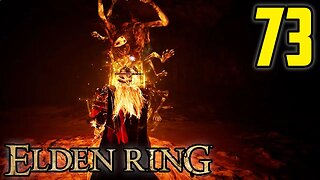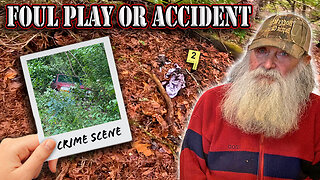Premium Only Content

How to Play Go
Learn the rules to the board game Go quickly and concisely - This visually rich video has no distractions, just the rules.
如果你有興趣看中文版的圍棋遊戲玩法,請點以下連結🔗: https://youtu.be/ZZp2QYrjDR8
Don't own the game? Buy it here:
USA - https://amzn.to/35bUMIL
Canada - https://amzn.to/3tFsBOz
UK - https://amzn.to/2YOGOxm
Australia - https://amzn.to/38Y9dmj
(These Amazon Affiliate links directly supports me)
RULES:
The object of the game is to get the most points. You receive points by either capturing opponent’s stones, called prisoners, or controlling empty territory on the board. Setup. Layout the board between two players. The board is typically a 19 x 19 grid, but you can play on a smaller one. If you are a beginner it is recommended you start on a 9 x 9 grid. The weaker player takes all the black stones while the stronger player receives the white stones.
Play starts with black, then turns alternate. On your turn you may either place 1 stone of your color onto any vacant intersection on the board or you may pass your turn and hand one of your stones to your opponent. When there are two consecutive passes, the game ends and points are scored.
At the end of the game, players receive 1 point for each captured prisoner and 1 point for each vacant intersection inside a territory they control. Intersections include every crossing of lines on the board including edges.
The empty intersections, which are horizontally and vertically adjacent to a stone, are called liberties. Stones of the same color that occupy adjacent liberties create a string. Only stones which are horizontally or vertically adjacent are solidly connected; diagonals do not count as connections. Strings also have liberties. Several strings close together, which belong to the same player, are often described as a group.
An isolated stone or solidly connected string of stones is captured when all its liberties are occupied by enemy stones. A player may not self-capture, that is, play a stone into a position where it would have no liberties or it would form part of a string which would thereby have no liberties. The only exception is, if, as a result, one or more of the stones surrounding it, is captured.
Two vacant spaces within a group or string are known as eyes. Any string or group of stones which has two or more eyes is permanently safe from capture and is referred to as a “live string” or “live group”. A string of stones which is unable to make two eyes and is surrounded by live enemy strings, is called a “dead string”.
Players are not obliged to complete the capture of an isolated dead string once it is clear to both players that the string is dead. This is called a “hopeless string” because it is unable to avoid eventual capture. You are allowed to leave hopeless strings as they are until the end of the game.
“Ko” describes a pattern of stones where a capture and recapture could happen infinitely. The ko rule removes this possibility of infinite repetition by forbidding the recapture of the ko until at least one play has been made elsewhere.
When you think your territories are all safe, and you can't gain any more territory, reduce your opponent's territory or capture more strings; instead of playing a stone on the board you pass, and hand a stone to your opponent as a prisoner. Two consecutive passes end the game.
At the end of the game, all hopeless strings on the board are removed and become prisoners. If you cannot agree whether a string is dead or not, then continue playing so you can complete the capture of disputed strings or confirm they are alive. Playing during a continuation like this will not change the score as each play is the same as a pass. But, since Black played first, White must play last and may need to make a further pass.
Each player counts their points from prisoners and captured intersections they control and whoever has the most, wins.
One of the best features of the game of Go is its handicap system. A weaker player may be given an advantage of anything up to nine stones. These are placed on the dots on the board in lieu of Black's first turn. Once all the handicap stones have been placed in position, it is White's turn to play. The established pattern for the placement of handicap stones follows these specific arrangements, similar to dots on a die and a one stone advantage grants the opponent the position of playing black.
Black has a natural advantage playing first. In games between players of the same strength, it is usual to compensate White for the disadvantage of playing second by adding points to White's score. These points are called komi. The value of playing first is about 7 points, so this is the normal size of komi. In tournaments, komi is often set at 7.5 points to avoid draws.
-
 3:22
3:22
Triple S Games
1 year ago $0.18 earnedHow to play Uno No Mercy
470 -
 8:40
8:40
Tundra Tactical
1 day ago $10.50 earnedThe Executive Order Wishlist.
69.3K2 -
 7:22:52
7:22:52
SpartakusLIVE
1 day agoSaturday SPARTOON Solos to Start || Duos w/ StevieT Later
160K4 -
 28:40
28:40
SLS - Street League Skateboarding
9 days agoTOP MOMENTS IN WOMEN’S SLS HISTORY! ALL THE 9’s - Rayssa Leal, Leticia Bufoni, Chloe Covell & more…
113K10 -
 2:03:03
2:03:03
The Connect: With Johnny Mitchell
22 hours ago $11.57 earnedHow Mexican & Chinese Cartels Control Illegal Marijuana Cultivation In America Using SLAVE Labor
77.6K12 -
 14:46
14:46
Mrgunsngear
23 hours ago $3.95 earnedPrimary Arms GLx 1x Prism With ACSS Reticle Review
69.9K8 -
 22:37
22:37
Degenerate Plays
23 hours ago $1.09 earnedI'm A Psychic Now - Elden Ring : Part 73
43.8K -
 2:32:02
2:32:02
Jamie Kennedy
16 hours agoEp. 195 Horror Legend Barbara Crampton
41.4K1 -
 23:00
23:00
Exploring With Nug
1 day ago $35.31 earnedHis Truck Was Found Crashed in the Woods… But He’s Gone!
163K9 -
 27:09
27:09
MYLUNCHBREAK CHANNEL PAGE
1 day agoDilmun: Where Life Never Ends
124K73